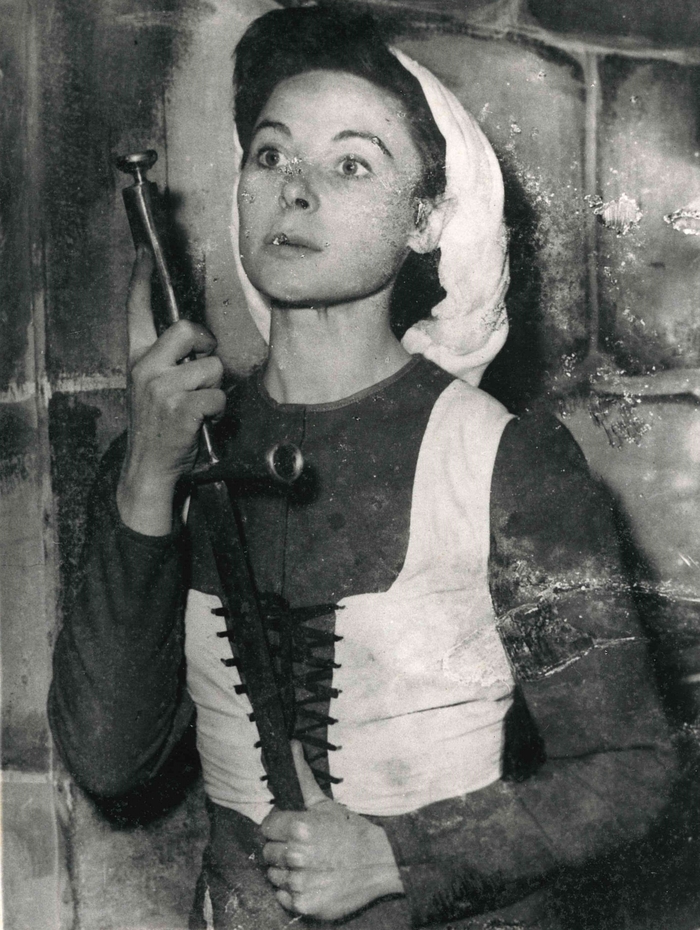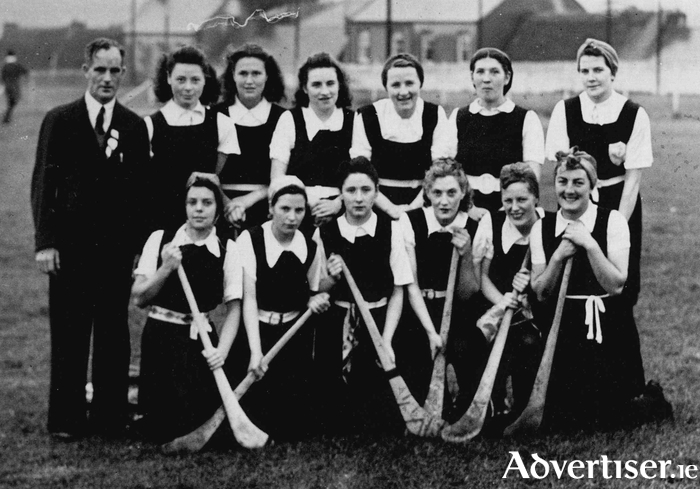Siobhán Giollamhuire McKenna was born on May 24, 1922, a second daughter to Eoghan McKenna and Gretta O’Reilly, Nancy being her older sister. She was educated in Belfast, in Taylor’s Hill Convent and then after a year out sick with glandular fever, as a boarder in St Louis Convent, Monaghan.
Her family moved to Galway in 1928 when her father was made a lecturer in mathematics in UCG. They lived in Fort Eyre in Shantalla and only spoke Irish at home. She played out on the street with her friends, cycled up and down Red Lane, annoyed couples who were courting in the bushes and became great friends with an old man across the road she knew as ‘Gongy’. Siobhán was a very good camogie player. She graduated from college with a first class honours BA in 1943 and then did a postgrad course in French in UCD.
As a teenager, she became interested in acting and joined An Taidhbhearc where she came under the influence of Walter Macken. “He taught me everything I needed to know about stagecraft and acting.” She made her stage debut there and played in several productions. She then moved to Dublin and joined the Abbey Theatre where her first part in English was The Countess Kathleen. She was quickly making a name for herself playing a variety of parts in a number of productions and also making appearances in films. In 1946, she married fellow actor Dennis O’Dea and they had one son, Donnacha who swam for Ireland in the 1968 Olympics.
In 1950, An Taidhbhearc invited her back to play the lead in her own Irish language translation of George Bernard Shaw’s play St Joan. It caused a sensation and played to packed houses. Mícheál MacLiammóir saw it and brought her to the Gate to play the part in the original English language, again to huge acclaim.
In 1956, she captivated New York audiences in yet another production of the play – “A tidy young lady with a broad face, alert eyes and a voluminous voice. Miss McKenna fairly bursts into every scene and usually, at the top of her voice. She reads lines with a sing-song rhythm that becomes rather hypnotic before the play is over. But the accent is Irish, which makes it particularly attractive to the Americans and the voice is extraordinarily powerful.” St Joan was regarded as her outstanding role on stage for many years.
She was in great demand for stage plays and for work on a number of films. She reinvented the role of Pegeen Mike in The Playboy of the Western World on stage and she also played the part in a film production of the play. This was regarded as her outstanding role on film.
She wrote and played a one-woman show called Here Are Ladies, a gallery of women by Irish writers she loved, "a collage of writing delivered with a caressing brogue and crowned with a powerful reading of Molly Bloom’s soliloquy". It was scheduled for a short run in New York but the demand was such that she did 67 consecutive performances before the strain on her voice became too much.
Many people of my generation were aware of her worldwide reputation having read about or heard about her performances on stage and in film, but had never personally experienced them. So there was great excitement in Galway in 1985 when we heard she was coming to Druid to act in a play that was especially written for her by Tuam playwright Tom Murphy. It was a three-hander directed by Garry Hynes in which a bedridden grandmother is trying to tell her granddaughters a story of something that had happened in her past. This production too caused a sensation and played to packed houses in Galway, in the Donmar Theatre in London and in the Gaiety in Dublin. For our generation, this was her outstanding role on stage.
She was to have played a part in the movie The Dead but she was seriously ill and on this day, November 16, 1986 she died in Dublin. Her remains were taken to Galway and in a remarkable tribute in the pouring rain, the streets were lined with people silently paying their respects with bowed heads, praying. Ómós.
At the graveside in Rahoon Cemetery, Brian Friel said, “For people of my generation, she personified the idea of Ireland.”
Our first photograph shows Siobhán as a member of the Connacht camogie team taken in the Sportsground in 1942. They are, back row, left to right: MJ Kenny, trainer; Siobhán McKenna; Síle O’Malley; Celia Mulholland; Monica Duggan; Catherine Griffin; Joe Melvin. In front are Hilda Murphy; Kitty Quinn; Frank Coen; Della Heffernan; Patsy O’Dea; and Kathleen Cosgrove. Our second image is of Siobhán in the part of St Joan in the Taidhbhearc production of 1950.


